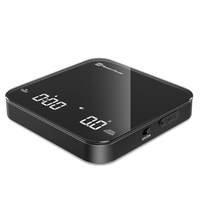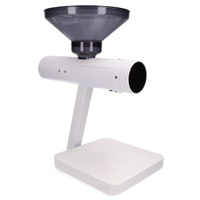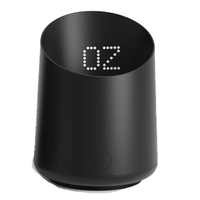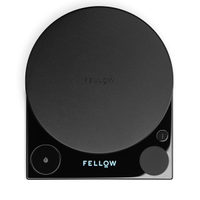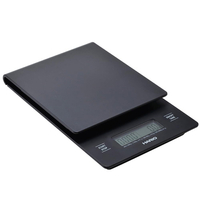I’m an ex-barista and these are the best scales for coffee I’ve tested
These are the best coffee scales on the market, for beginners and experts alike
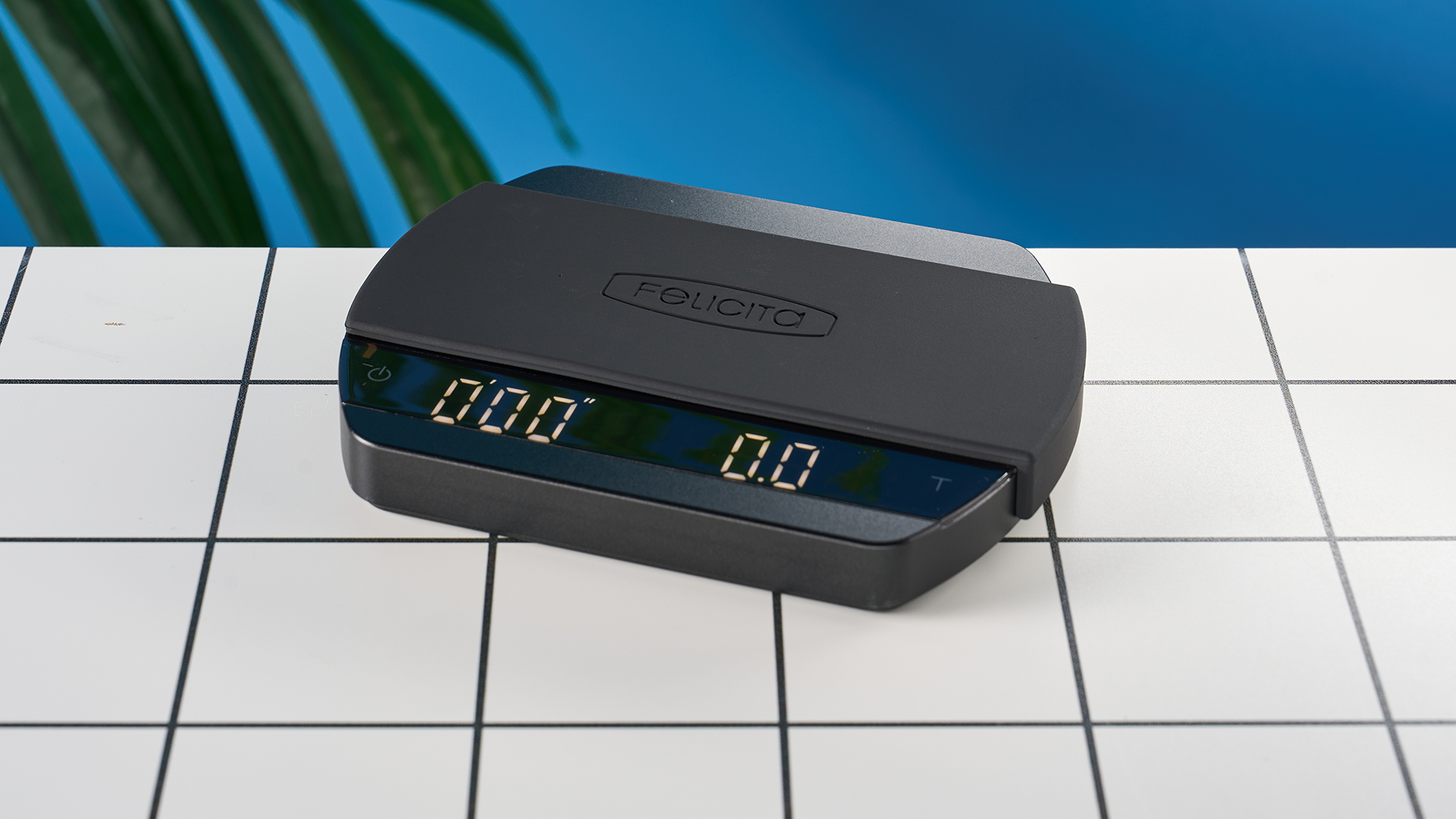
If you love coffee as much as I do, you’ll know that using the best scales for coffee plays a big role in making a brew with the best flavor. The best coffee scales help you find precise ratios. Anyone who’s done research into the complex and multi-faceted nature of coffee brewing will know that precise ratios are as important as high-quality beans when it comes to obtaining the best taste.
While I can’t tell you what roast or grind suits your personal palate, I can help you figure out the best coffee scales. Coffee can quickly become an expensive hobby, so I’ve got recommendations for the budget-friendly options, unless, of course, you're ready to invest in something on the premium end, like the Acacia Pearl S.
After spending five months testing the best coffee scales, my personal recommendation is the Felicita Arc. It has a companion app, is IPX5 rated, and a range of modes including pre-infusion timing. But there are plenty of other options for a range of homes, uses, and budgets. These are my favorite.
Quick list
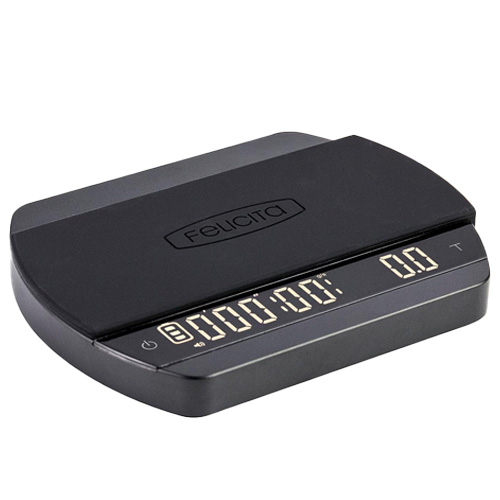
The Felicita Arc is my best overall coffee scale for a reason. Not only is it one of the few coffee scales with an IPX5 rating, it also has live app functionality, range of weighing and timing modes, and is a sight for sore eyes.
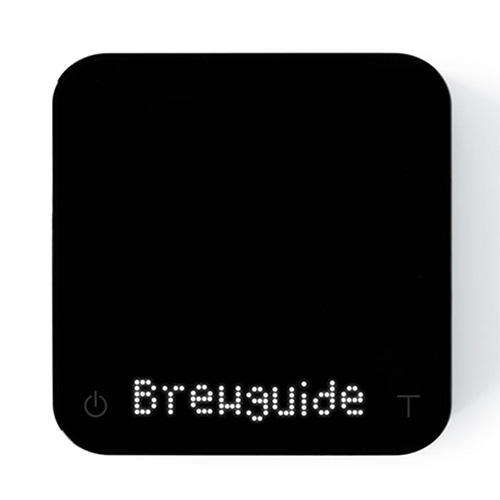
I've selected the Acaia Pearl Model S as my best premium coffee scale because there's nothing else like it. Not only is it super precise and versatile, with 7 weighing and timing modes, the Pearl S literally teaches you how to make coffee and looks a treat while doing it.
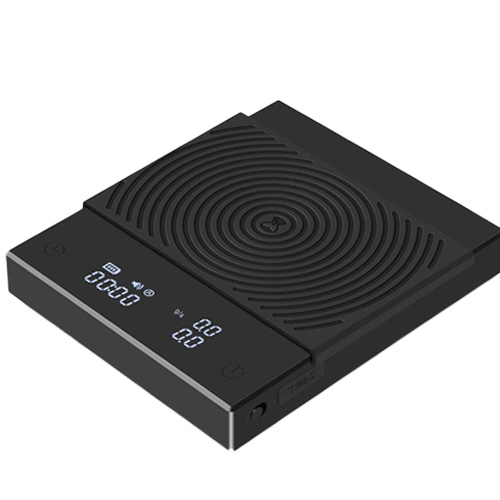
For those pour-over aficionados, the live flow-rate monitor on the Timemore Black Mirror Basic 2 will ensure you get a perfect brew every time, whether you're using a Chemex, V60, Kalita Wave, or anything in between.

Espresso evangelists need look no further: the Acaia Lunar is the scale for you. It's very expensive, but it's oh-so good. The companion app, Brewmaster, generates live flow-rate graphs and even has dedicated space for tasting notes and espresso reviews.
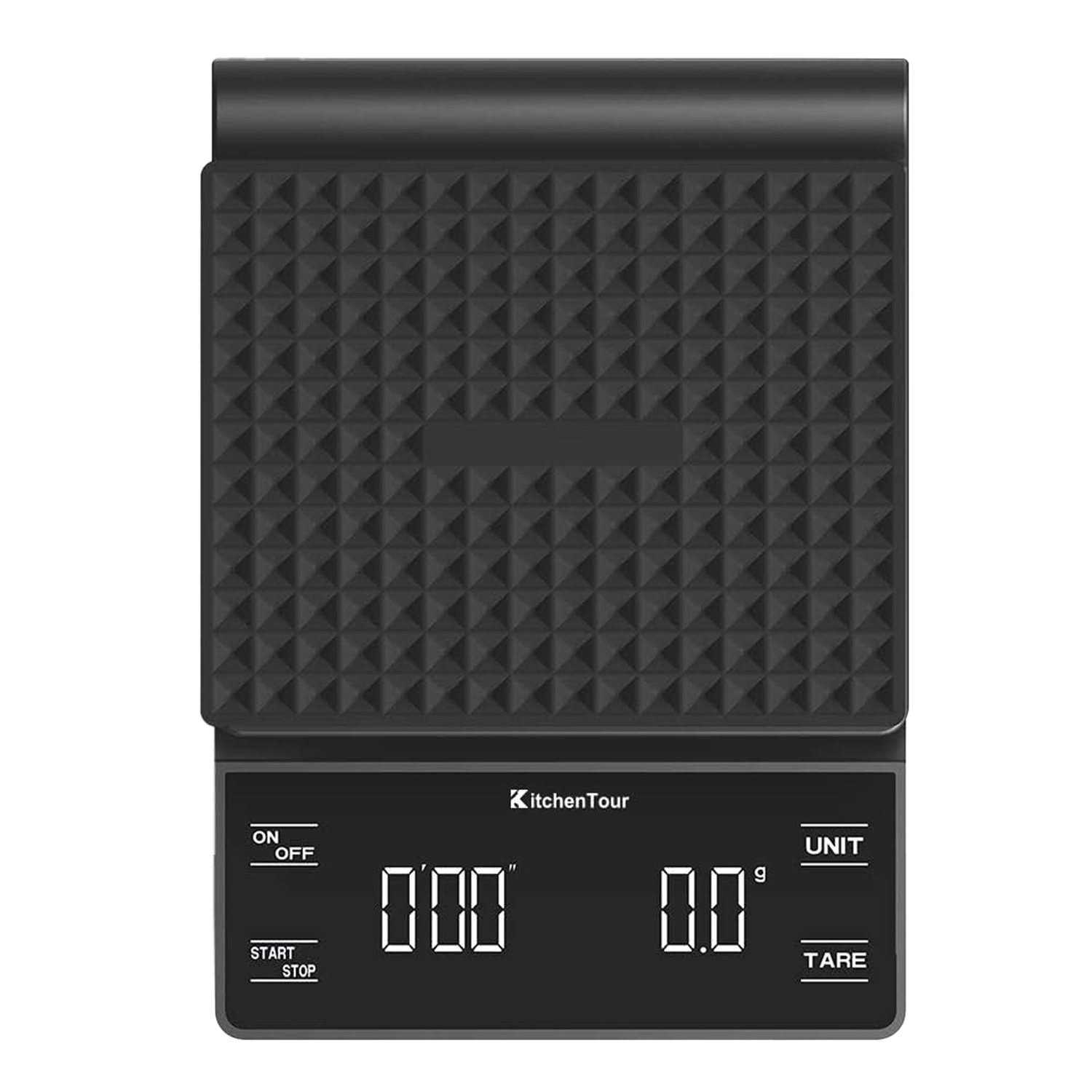
For newbies, or those simply trying not to spend a fortune, the KitchenTour coffee scale can do no wrong. The minimalist coffee scale weighs and times easily. It doesn't have any premium features like auto-detection or waterproofing, but its $20 price tag is majorly appealing.
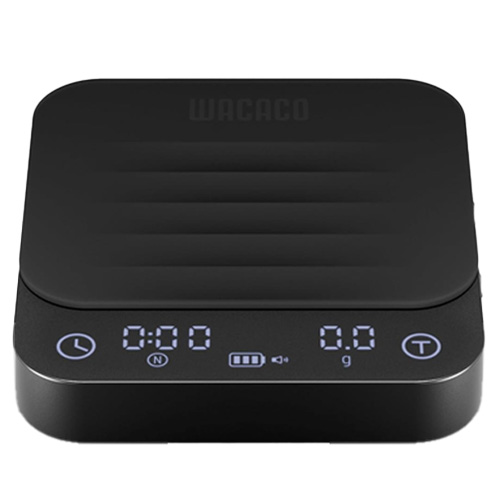
Although perfectly compatible with most pour-overs, the Wacaco Exagram Pro is my favorite budget espresso scale because of its compact size. It's remarkably easy to use, with no confusing button mashing or studying the user manual necessary.
Meet your reviewer

I worked as a barista for several years, making thousands of cups of coffee, and I still love making great tasting coffee. If there was an extra day in the week, I’d gladly spend it working in a coffee shop. One of the main things I’ve taken away from my role as a barista is that coffee making isn’t just an art: it’s also an exact science. Ratios are your best friend.
I've personally tested and reviewed every single coffee scale on this list.
The best coffee scales you can buy right now
Why you can trust Tom's Guide
Best coffee scale overall
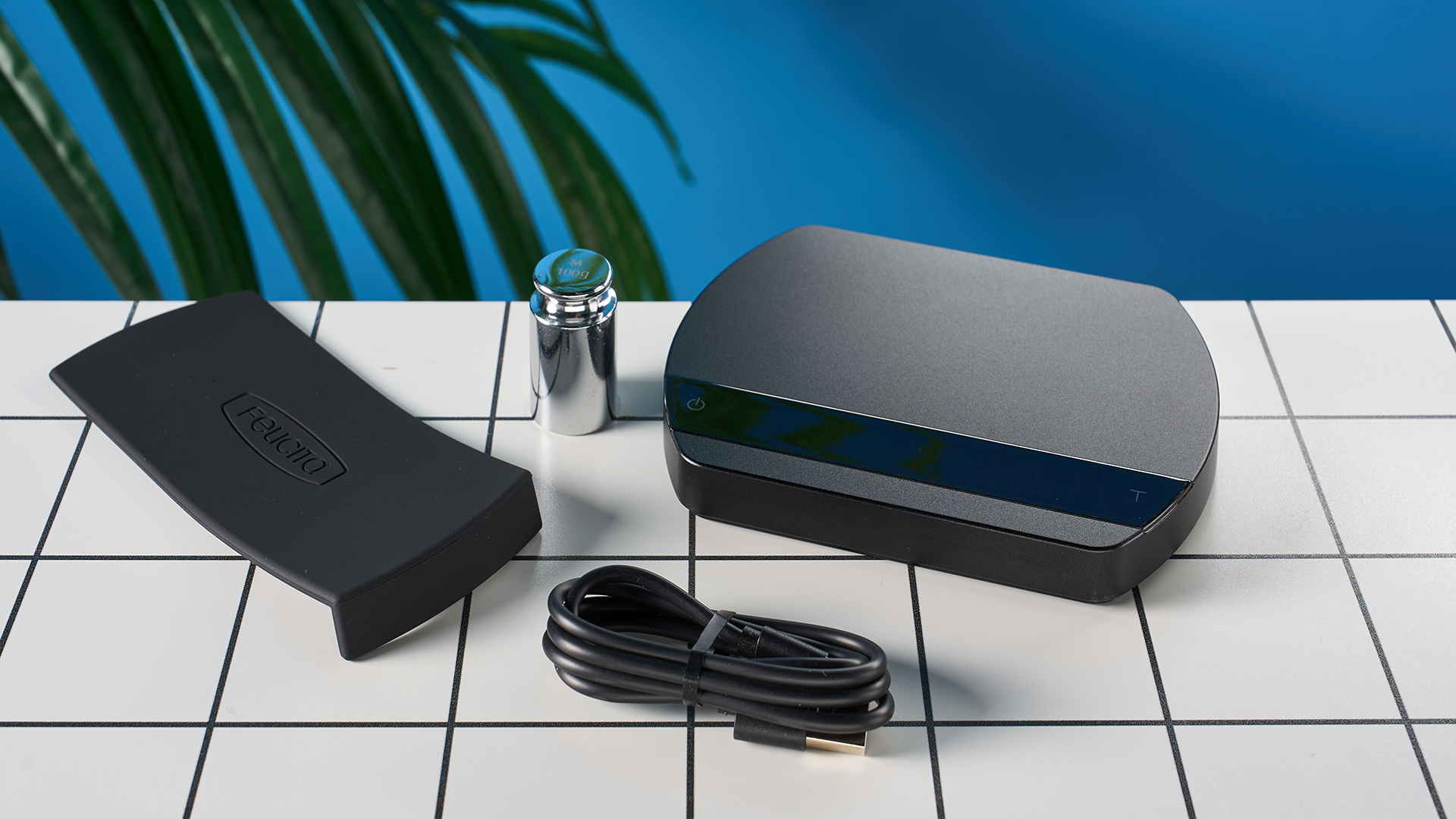
Specifications
Reasons to buy
Reasons to avoid
Here it is: my best overall coffee scale. The Felicita Arc is a reliable, mid-range coffee scale, with premium functions like app compatibility and a seemingly never-ending range of functions. At $110, it’s by no means the priciest scale on this list, but it’s also not a particularly cheap option.
The Felicita Arc is the only coffee scale on this list with an IP rating — it’s IPX5. For electric kitchen appliances, this is a very good rating, and will give you some peace of mind.
You might think the 4.1 x 5.3 x 0.6 inch size would make it too small for large coffee makers like the 6-cup Chemex, but the weighing pad is so well-constructed, it’s not an issue. The LED screen is bright and easy to clean, and the controls are responsive, making this one of the least frustrating coffee scales I’ve used.
In testing, I had to study the instructions to make the most of this scale. Accessing the vast range of functions is simple enough in theory, but each requires a specific sequence of button-mashing. Once I’d gotten used to this button-mashing, I was able to access the tare, time, auto-time, auto-tare, and pre-infusion time settings without too much stress.
One of my favorite aspects of this scale is the Felicita app, which I used to analyze my flow-rate in handy graphs. The Arc connected to my phone via Bluetooth and worked out my pouring consistency. If you’ve used the Acaia Brewmaster app, the Felicita version works almost exactly the same.
The Felicita Arc is the most versatile, intelligent, and functional scale on this list for its price. Whether you’ve got an espresso machine, a pour-over coffee maker, or anything in between, the Felicita Arc will be the perfect assistant.
- Read my full Felicita Arc review
Best premium coffee scale
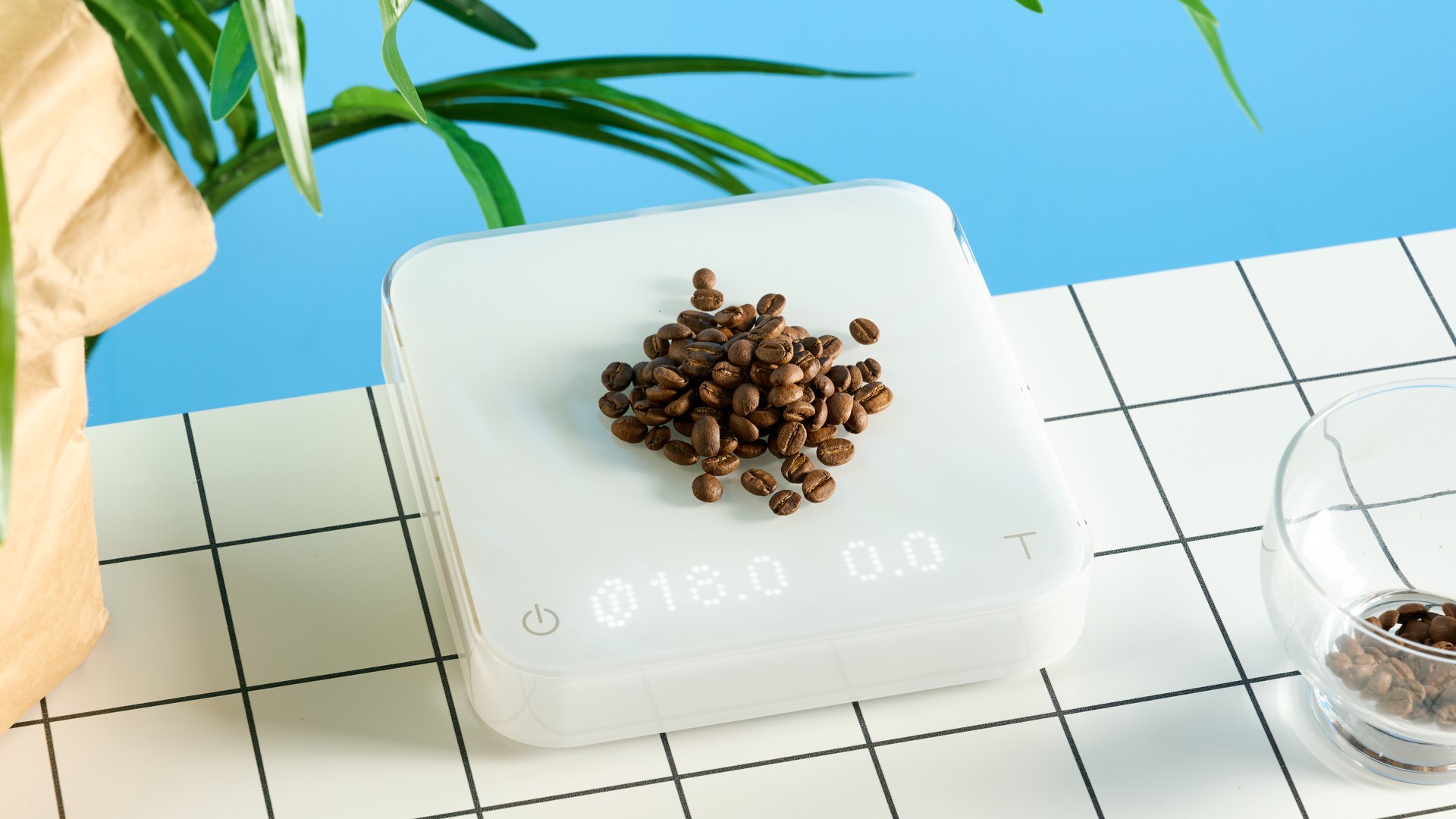
Specifications
Reasons to buy
Reasons to avoid
I could write thousands of words waxing lyrical about the Acaia Pearl S, but I’ll keep it short. This is, hands-down, the best coffee scale I’ve ever personally used. But it’s eye-wateringly expensive, and that’s why it’s our best premium coffee scale.
The Acaia Pearl S is perfect for both pour-over and espresso, thanks to its 6.3 x 6.3 x 1.3 inch size. It fit nicely under my espresso machine drip tray, and was also large enough to work with a 6-cup Chemex.
There are seven weighing modes, too, including: espresso, pour-over, portafilter, flow-rate, and even flow-rate practice mode. Flow-rate practice monitors your pouring stability, and will alert you if you pour too fast or too slow. I found this not only useful, but very entertaining during testing.
Although the Pearl S has all these enlightening modes, where it really excels is in the companion app, Acaia Brewguide. I lost hours scrolling through the library of coffee brewing recipes in the app, ranging from things like ‘beginner V60’ to ‘expert Kalita Wave’. You select your desired recipe, and it’lll be sent to the scale via Bluetooth.
The scale’s LED screen will teach you, step-by-step, how to brew your desired coffee. This is the most unique feature I’ve ever seen on a coffee scale, and the main reason why this is the best premium coffee scale. I already considered myself pretty clued-up on various brewing methods, but the Acaia Pearl S taught me loads more about lesser-used brews. Each recipe is uploaded by a roastery or a member of the Acaia community. This scale taught me how to use Kalita Waves, and I’ll never forget that!
There’s only one major flaw to the Pearl S: it’s not waterproof. But, if you’ve got $220 to spare, this scale will not disappoint.
- Read my full Acaia Pearl S review
Best pour-over coffee scale
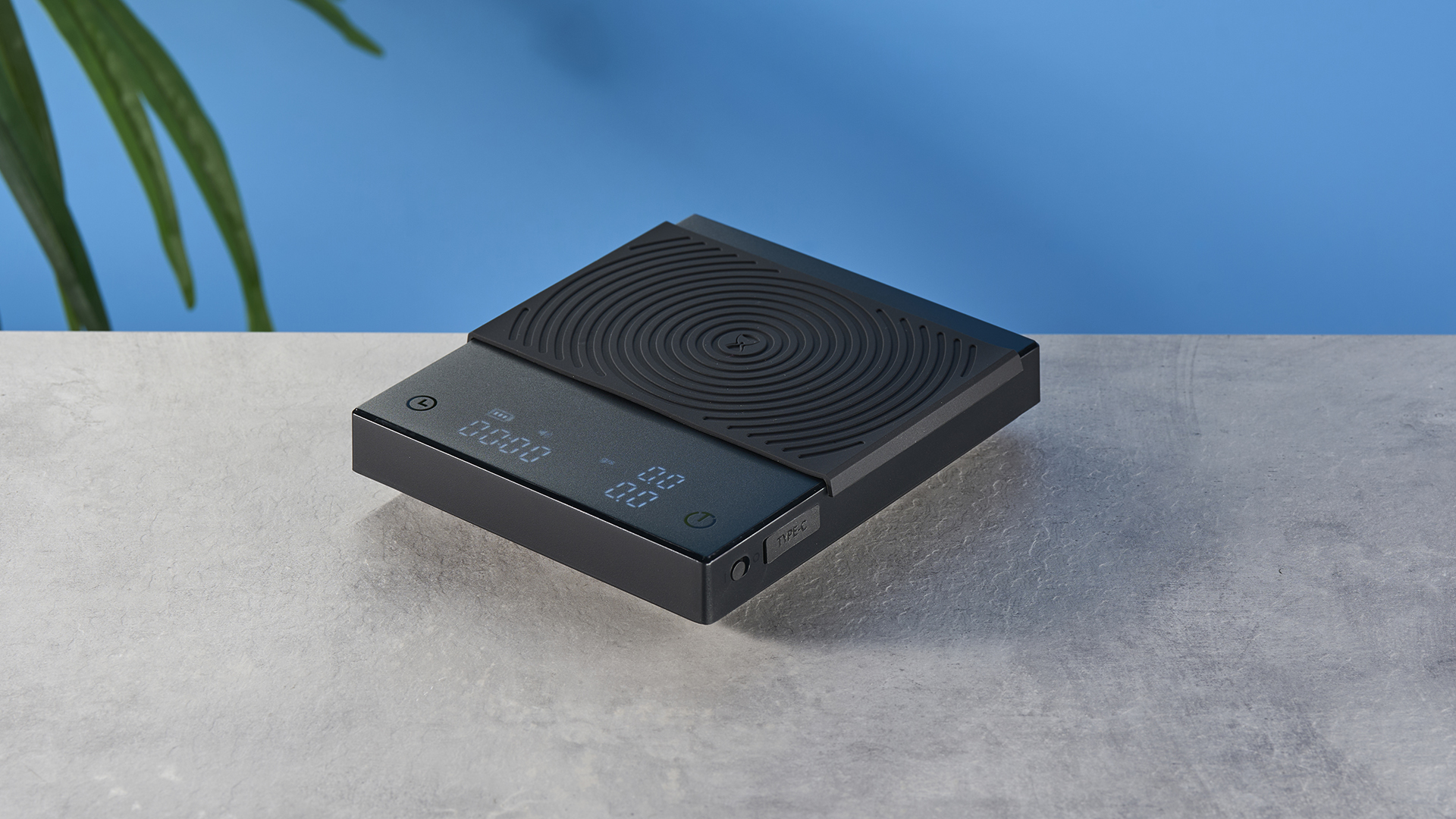
Specifications
Reasons to buy
Reasons to avoid
The Timemore Black Mirror Basic 2 has everything. Looks, live flow-rate monitor, accurate weighing and timing. In testing, I was initially a little frustrated with this flow-rate monitor, as it changed too quickly for me to perceive.
However, with more practice, I realized that this was a user problem, not a fault of the scale. You need to pour with one of the best gooseneck kettles and control your flow. You should be aiming for a flow-rate of 5g/s — and the Black Mirror Basic 2 will help you master flow-rate control.
Not only does the Black Mirror Basic 2 have a flow-rate monitor, its weighing pad is also big enough to comfortably fit even a 10-cup Chemex coffeemaker. The 6-inch-tall pad means your coffeemaker of choice won’t be teetering off the edge and confusing the weight display.
In terms of usability, the Black Mirror Basic 2 is a great option. This scale is super accurate; in testing, it displayed the same weight as the reference scales. While it doesn’t have an IP rating, Timemore has and how aesthetically pleasing the Black Mirror Basic 2 is.
There’s no separate area for the touch controls, so it is a little bit overly sensitive, but with practice this won’t be an issue. And what’s best is that this scale is nowhere near as expensive as other options, and works just as well.
- Read my full Timemore Black Mirror Basic 2 coffee scale review
Best espresso coffee scale
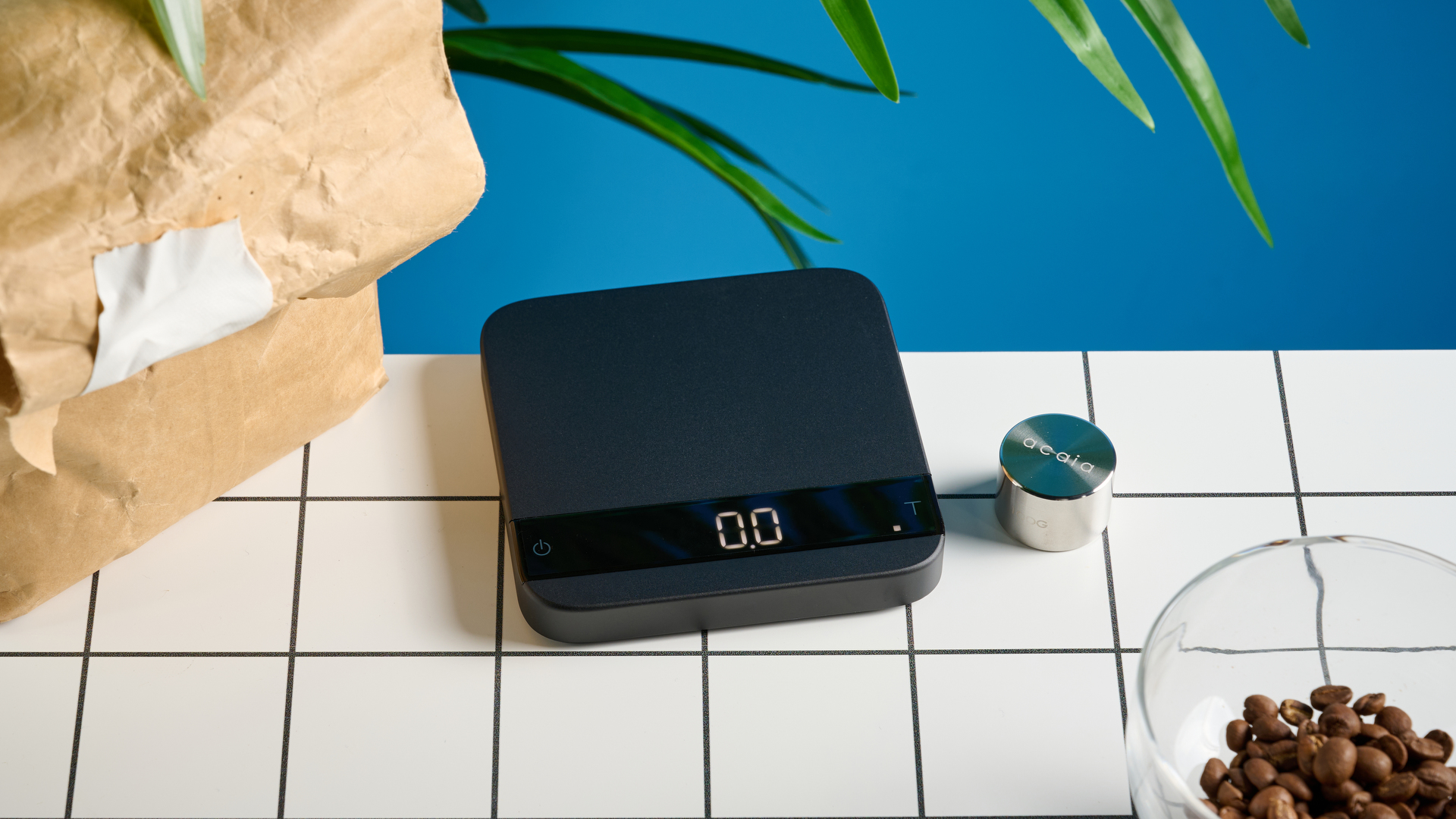
Specifications
Reasons to buy
Reasons to avoid
As you can tell from the $250 price tag, the Acaia Lunar is a work of art. All of Acaia’s coffee gear is excellent, well-crafted, and intuitive, but it comes with a high price tag to boot. The Lunar is no different. The aluminum body is water-resistant, which means it will be able to withstand dripping and steam from the espresso machine without dying.
I must say that the Lunar is a beauty, an utter sight to behold. The sleek black exterior has a bright LED screen, perfect for those aesthetic coffee setups. It almost looked too beautiful in my chaotic coffee testing setup. Acaia designed the Lunar for commercial use, but I used it at home with my espresso machine and had a great time.
Right out of the box, I calibrated the scale with the provided calibration weight. The scale is supremely accurate and comes with a calibration weight, so it’ll always be reliable. Although I recommend the Lunar as my top espresso scale, there’s nothing stopping you using it with a pour-over. I was able to get it working in pour-over mode with my 6-cup Chemex perfectly, thanks to the stable and well-constructed weighing pad.
However, the Lunar does excel with espresso. The Lunar has a seldom-seen pre-infusion auto-timer, which measures the espresso pre-infusion time. I was able to use this timer to analyze the espresso grind, and work out if it was too fine or coarse.
What makes the Lunar so premium is the companion app, Brewmaster. This app connects to the Lunar via Bluetooth and can act as a remote scale on your phone. Brewmaster generates users a live flow-rate graph, and even provides a tasting notes section so you can evaluate each espresso post-extraction. I was completely obsessed with this during testing and had to tear my attention away from the flow-rate graph on multiple occasions.
For espresso enthusiasts, though, there’s nothing better than the Lunar scale. If you’re anything like me, you’ll be studying the flow-rate graph after each extraction like it holds the secrets of the universe.
- Read my full Acaia Lunar review
Best budget pour-over coffee scale
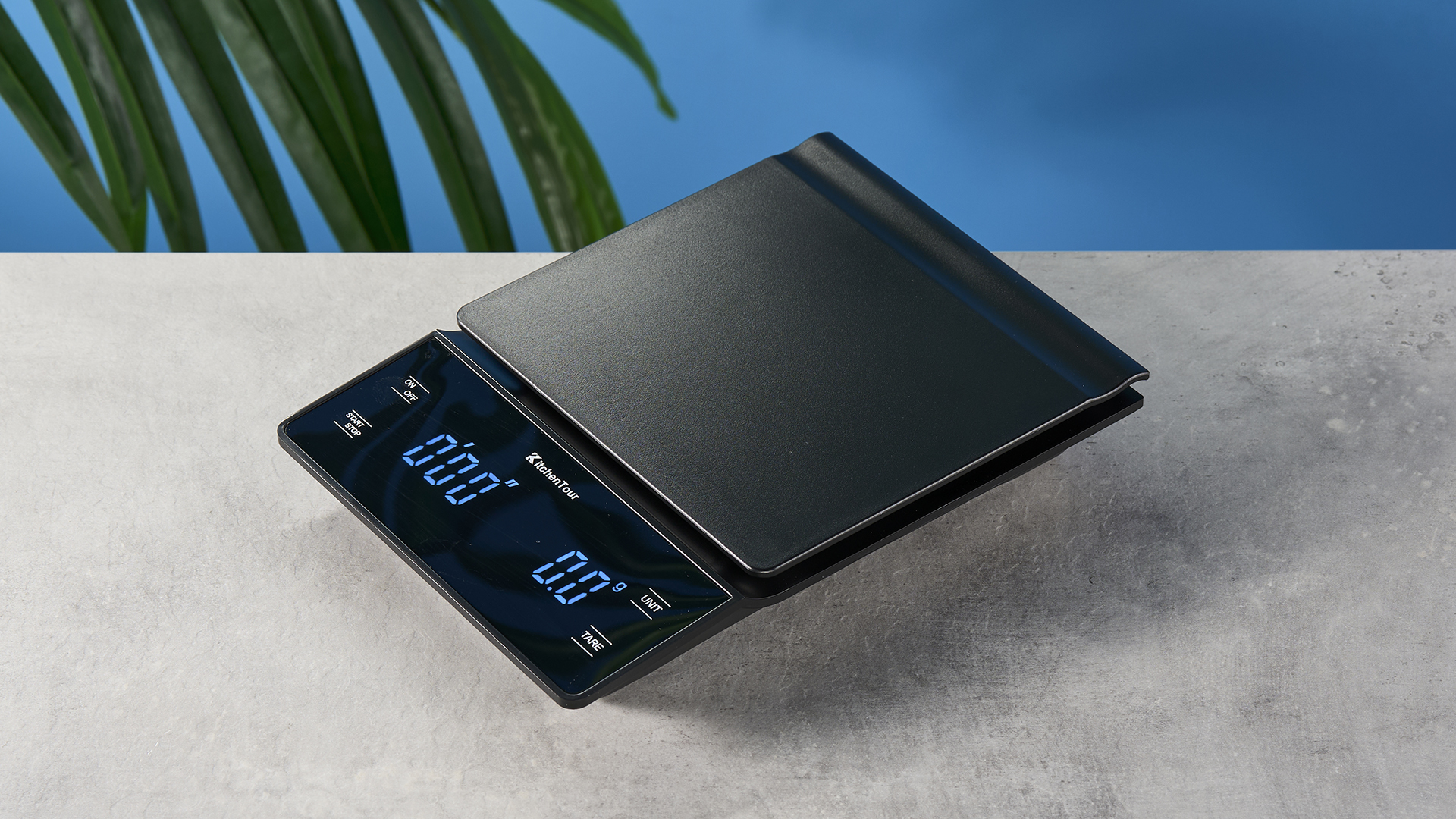
Specifications
Reasons to buy
Reasons to avoid
If you’re trying to save some money but you don’t want to sacrifice your coffee hobby, the KitchenTour Coffee Scale might be the best option for you. While the MRSP is $21, I’ve never seen it actually sold for that price — it’s usually around $19, and the lowest I’ve seen is $16.
What makes the KitchenTour Coffee Scale such great value is that it can do a lot of things a premium scale can. It weighs to an accuracy of 0.1g, which is standard on most coffee scales these days. There’s a timer so you can calculate flow-rate. Even though the KitchenTour scale is quite long at 8.5 inches, it slotted onto the drip tray of the two espresso machines I used to test — see ‘How We Test’ for more details.
In terms of what it lacks, there’s very little missing when you consider the affordable price. There’s no auto timer, but you can easily right that by simply watching your brew and starting the timer manually. It’s not particularly attractive, but if you don’t care for aesthetics, this won’t be an issue. In testing there was a little grievance with the initial weight jumping, but this sorted itself in under a second.
For those trying to save bucks, the KitchenTour Coffee Scale is the one for you.
- Read my full KitchenTour Coffee Scale review
Best budget espresso coffee scale
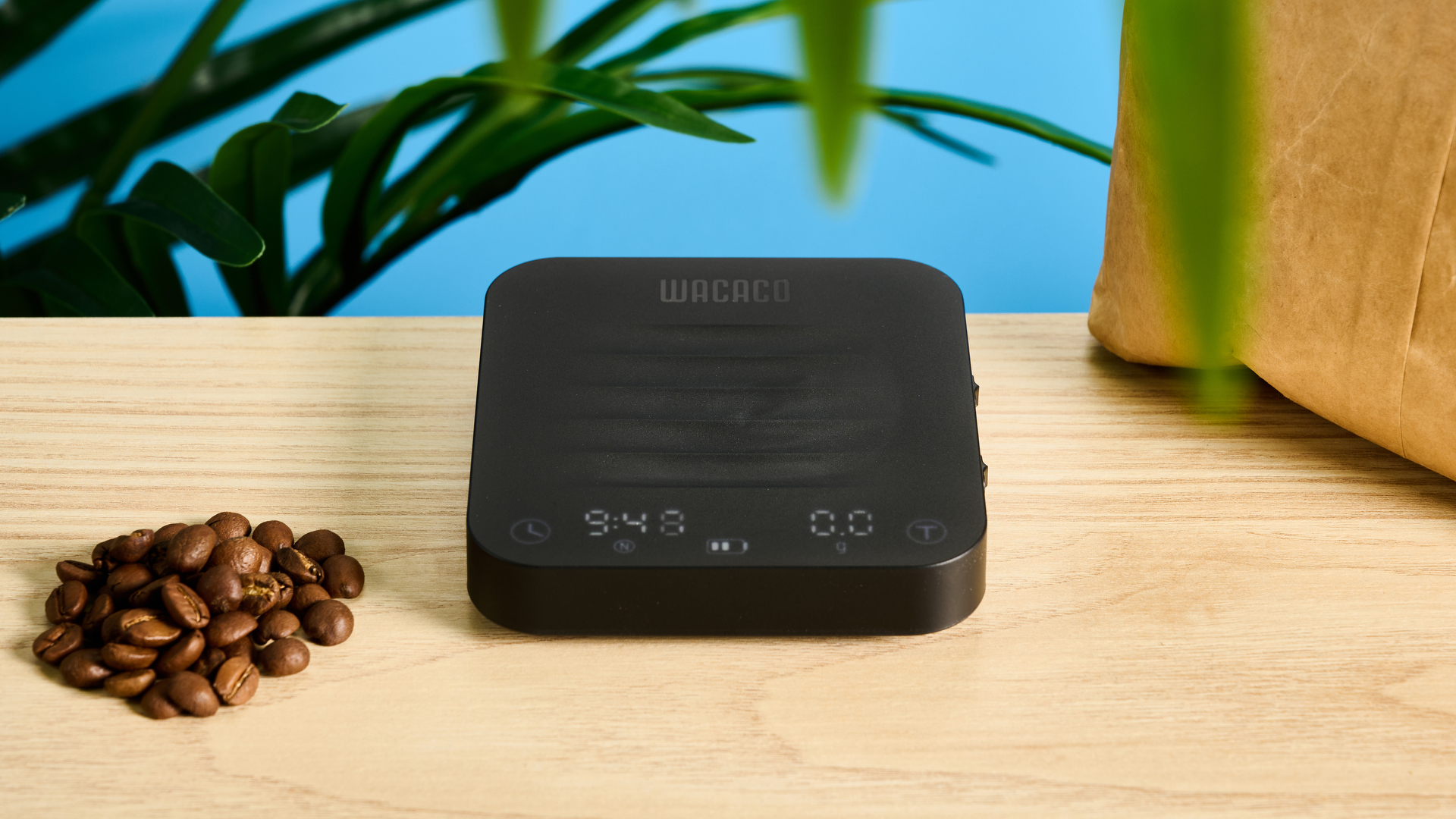
Specifications
Reasons to buy
Reasons to avoid
The Wacaco Exagram Pro coffee scale performs like a much pricier scale. The compact scale is just 3.6 x 3.8 x 0.9 inches, which makes it ideal for slotting on espresso machine drip trays. Its sub-inch height means it’s ideal for even the smallest espresso machines, and will even fit under a tall mug.
Considering this scale is an affordable $49, it’s a force to be reckoned with. The Wacaco Exagram Pro has three modes: espresso, pour-over, and normal, so it doesn’t restrict you to just espresso. Accessing these modes is simple — no confusing button-mashing or studying user manuals here, which I found a welcome departure from the high-tech scales, like the Acaia Lunar, I’ve tested in the past.
To change modes, I simply slid the switch from ‘E’, ‘P’, or ‘N’. In testing, I found espresso mode worked a charm: it detected the first drop of coffee and started timing automatically. Although there’s no flow-rate monitor, I was able to calculate the average from the weight and time displayed on the Exagram’s bright screen. Besides, in practice, I found the lack of flow-rate monitor didn’t negatively affect my extraction process.
I wasn’t even restricted to just espresso. I got the Wacaco Exagram Pro working with my 6-cup Chemex, which is my largest pour-over coffee maker. The pour-over mode counted me up based on my desired ratio. So even though the Wacaco Exagram Pro is my best budget espresso scale, it’ll work just as well with a Hario V60 or Kalita Wave.
When I wanted to monitor pre-infusion time, I simply used the ‘normal’ mode to manually calculate complete espresso extraction. I’m a little gutted that there isn’t an explicit option for pre-infusion timing, but this is my best budget espresso scale, not my best premium. On the whole, though, the Wacaco Exagram Pro is a fantastic coffee scale that can fit just about anywhere, making it ideal for espresso machines.
- Read my full Wacaco Exagram Pro coffee scale review
Best coffee scales: Specs compared
Disclaimer
All prices were correct at time of writing.
| Header Cell - Column 0 | Felicita Arc | Acaia Pearl S | Timemore Black Mirror Basic 2 | Acaia Lunar | KitchenTour coffee scale | Wacaco Exagram Pro |
|---|---|---|---|---|---|---|
Price | $110 | $220 | $59 | $250 | $21 | $49 |
Weight | 9 ounces | 1.36 pounds | 1.16 pounds | 9.4 ounces | 9.6 ounces | 5.5 ounces |
Dimensions (inches) | 4.1 x 5.3 x 0.6 | 6.3 x 6.3 x 1.3 | 5.9 x 5.9 x 1.5 | 4.1 x 4.1 x 0.6 | 8.5 x 6.4 x 1.5 | 3.6 x 3.8 x 0.9 |
Max weight | 2000g / 4.4 pounds | 3000g / 6.6 pounds | 2000g / 70.5 ounces | 2000g / 70.5 ounces | 3000g / 6.6 pounds | 2000g / 70.5 ounces |
Min weight | 0.1g | 0.1g | 0.1g | 0.1g | 0.3g | 0.3g |
Accuracy | 0.1g | 0.1g | 0.1g | 0.1g | 0.1g | 0.1g |
Materials | Aluminum | Polycarbonate plastic | Acrylic | Aluminum, acrylic | ABS plastic | ABS, PC, stainless steel, silicone |
Color | Black | White, black | Black, white | Black, cool white, beige white, silver, space gray | Black | Black |
Battery | USB-C rechargeable | USB-C rechargeable | USB-C rechargeable | USB-C rechargeable | 3 x AAA (included) | USB-C rechargeable |
Bluetooth | Yes | 5.0 | N/A | 5.0 | N/A | N/A |
Units | Grams, ounces | Grams, ounces | Grams, ounces | Grams, ounces | Grams, ounces, milliliters | Grams, ounces |
Max standby time | 5 minutes | Eternity | 5 minutes | Eternity | 2 minutes | 5 minutes |
Waterproof | IPX5 | No | Water-resistant | Water-resistant | No | Water-reistant |
Accessories | Heatproof mat, 100g calibration weight | Heatproof mat | Heatproof mat | Heatproof mat, 100g calibration weight | Heatproof mat | Heatproof mat, carry case |
Warranty | 1 year | 2 years | Repairs, replacements only | 2 years | None | 2 years |
Also tested
I spent more than five months meticulously testing coffee scales. While none are outright bad, some are much more expensive than they need to be, which means I can't recommend them, but they're still good options if you're after more choice.
I do love this coffee scale — it's cute, it's compact, and it's effective. However, it doesn't have a live flow-rate monitor, and it has a tendency to turn itself off even when it's fully charged, which makes it a pain to use in a pinch.
Read my full Maestri House Coffee Scale review
I did have a great time testing the Acaia Orion. It's not really a coffee scale, but more a coffee doser. You enter your desired weight, and the Orion doses that amount of coffee. It works great, but it also happens to be over $1,000.
Read my full Acaia Orion Doser review
Again, the Subminimal Subscale is more like a doser than a scale, but it still weighs coffee. It's designed for the espresso to extract into the cup, and its IPX4 rating means it can withstand water. However, it's not versatile at all, and is completely incompatible with any other type of brewing.
Read my full Subminimal Subscale Doser review
I think the Fellow Tally Pro is an excellent scale. It has a wonderful BrewAssist mode, which counts you up based on your dialed ratio, and looks beautiful. However, it has no flow-rate mode, and is a staggering $185.
Read my full Fellow Tally Pro review
While not a bad scale at all, the Hario V60 Drip Scale isn't the best of the best. It's not exactly a budget option, at $56, but doesn't do enough to justify that price tag. Don't get me wrong, it weighs and times well, and its pad means it's big enough for the largest coffee makers, but it's a little ugly and dated.
Read my full Hario V60 Drip Scale review
How we test the best coffee scales
In order to give all the scales a fair shot, I test them in comparison to others and independently. I compare weight accuracy by weighing the same object on up to six scales simultaneously and noting down discrepancies.
I use each scale with one of two espresso machines (the KitchenAid Semi-Automatic Espresso Machine with Burr Grinder, or the De’Longhi La Specialista Opera) and with my V60 Dripper and Chemex.
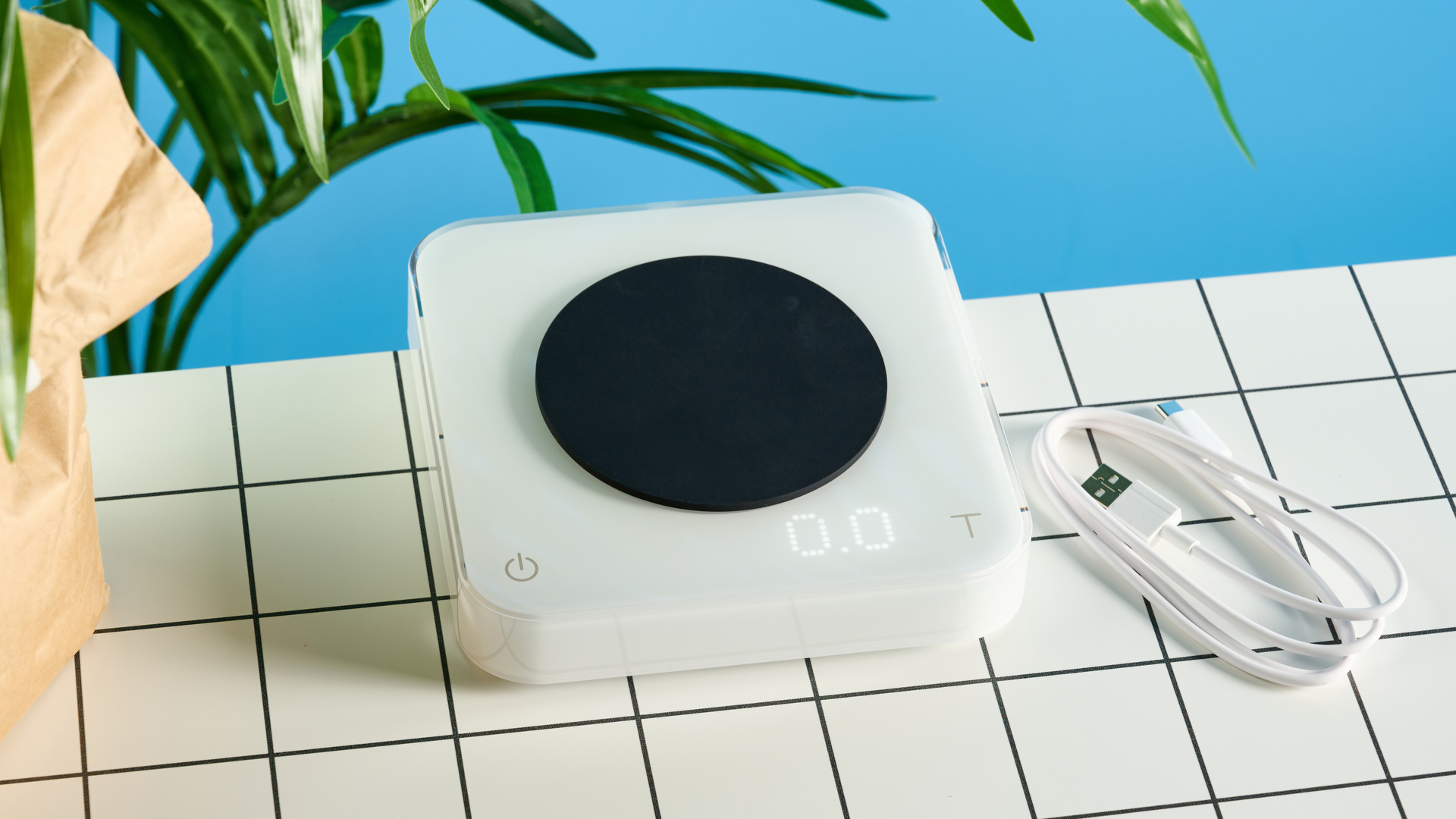
Not only do I use the scales with a variety of brewing methods, I also taste (a lot of) the coffee each scale helped produce. We used these tests to evaluate the best coffee scale to decide which ones are the best for you.
There are lots of different specialty coffee styles, so each scale is analysed based on its respective functionality. I study how each scale performed its most basic task — weighing coffee — and then how the scale enhances this functionality with features like timers, automatic flow-rate calculation, IP ratings, and measuring pre-infusion times.
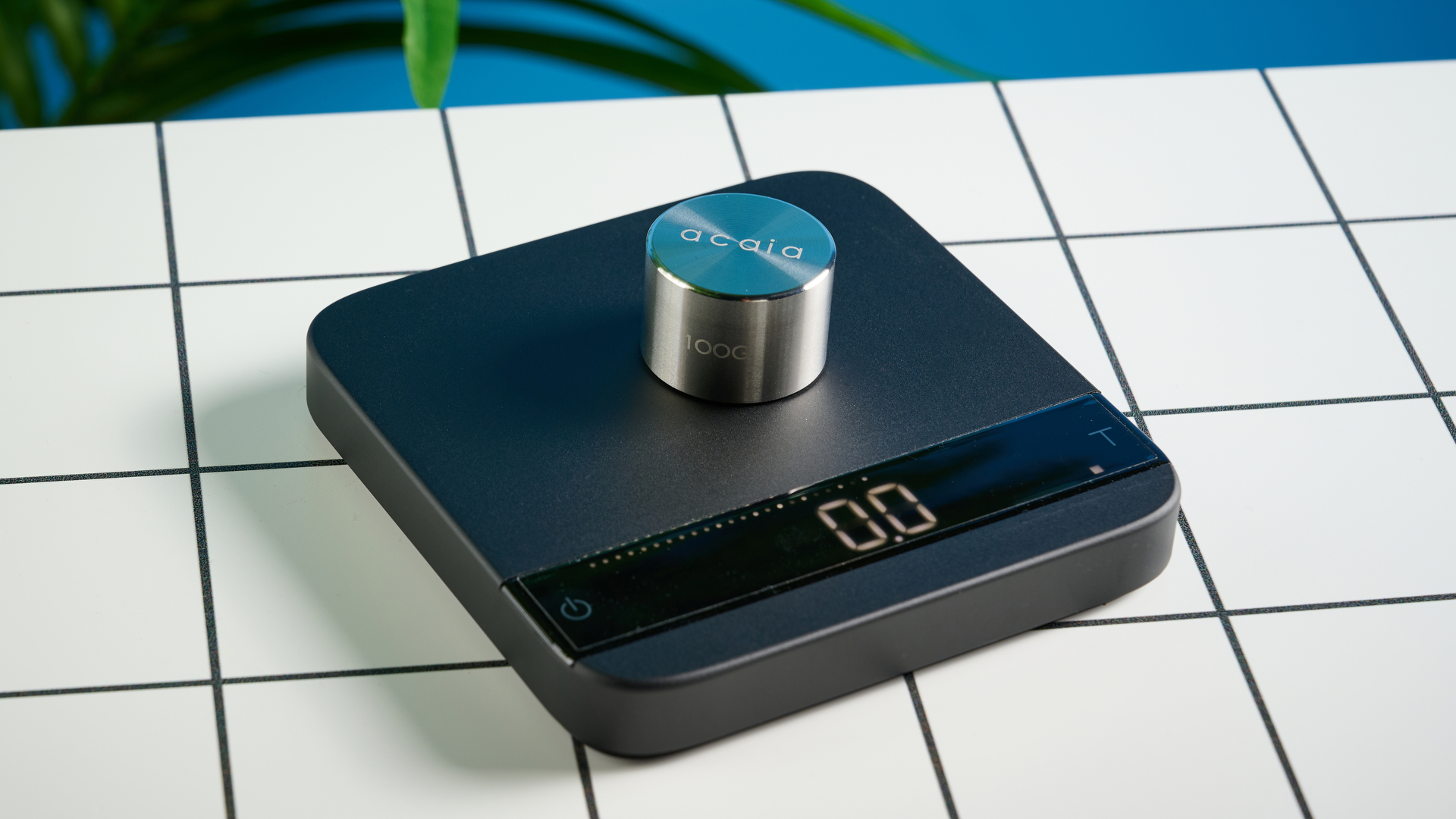
Of course, I analyze baseline performance, but I also consider ease of use, convenience, storage, and cleaning. USB-C rechargeable scales tend to score high on convenience and maintenance, as you won’t have to purchase batteries. Scales with IP ratings or waterproofing are easier to clean, which will be reflected in their overall convenience rating. In terms of ease of use, this means: How much of a learning curve was there? Did we master the scale right out of the box? Or did I have to study the instruction manual?
As you’d expect, I ranked these scales based on: functionality, design, premium features, battery life, ease of use, convenience, maintenance, and overall performance in comparison to its price. The list we present here is after hours and hours of testing and daily use.
How to choose the best coffee scale
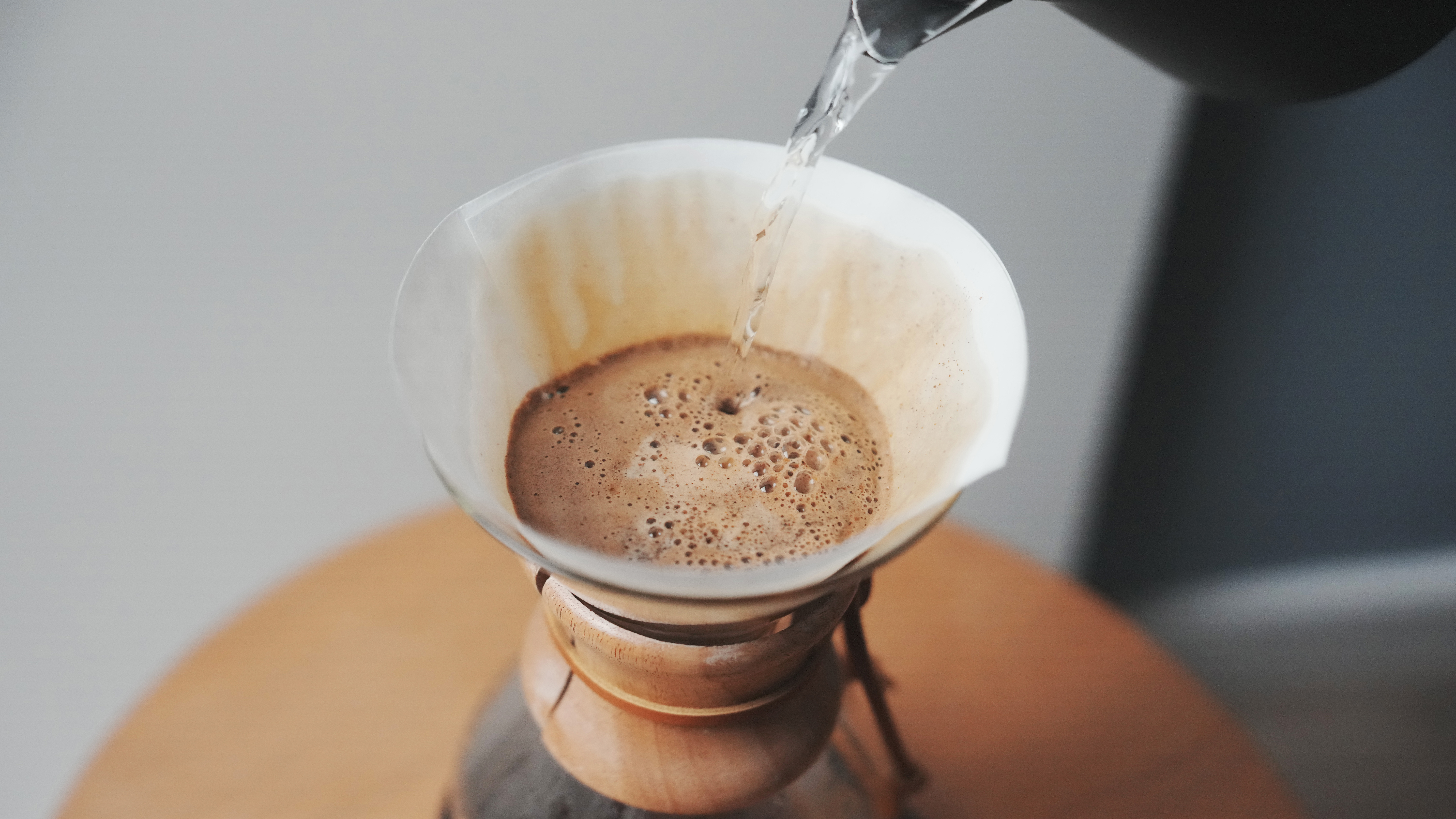
What should I look for in a coffee scale?
The answer to this question depends on your individual use case. Do you have an espresso machine with a narrow drip tray? In this case, you’ll need to buy a coffee scale that can fit on its drip tray — I’d recommend measuring your drip tray and then looking at coffee scale dimensions.
Or are you a proud French press or Chemex user? To increase compatibility, you’d need a larger scale with a pad big enough to fit your brewing equipment. If you have a Chemex, you’d need a scale with at least a ~5 inch weighing pad.
Once those imperatives are out of the way, you’ll need to think about what you want out of the coffee scale. Will you use it simply to ensure accurate espresso brewing, or do you want to measure pre-infusion time? Would you like to master the art of coffee:water ratio? If you want a basic scale, there’s no need to get something like the Acaia Lunar, with the ultimate accuracy of 0.01g or flow-rate indicator. You’ll want something nice and basic like the KitchenTour, which weighs and times, with no confusing functions.
Some coffee scales go above and beyond, like the Acaia Pearl S, the Acaia Lunar, and the Felicita Arc. These scales all have companion apps, which connect to the scale via Bluetooth. Each espresso or pour-over you make will be logged in the app. You can even make graphs of your flow-rate for extra-curricular studying. Obviously these features are overkill, unless you class yourself as a coffee aficionado.
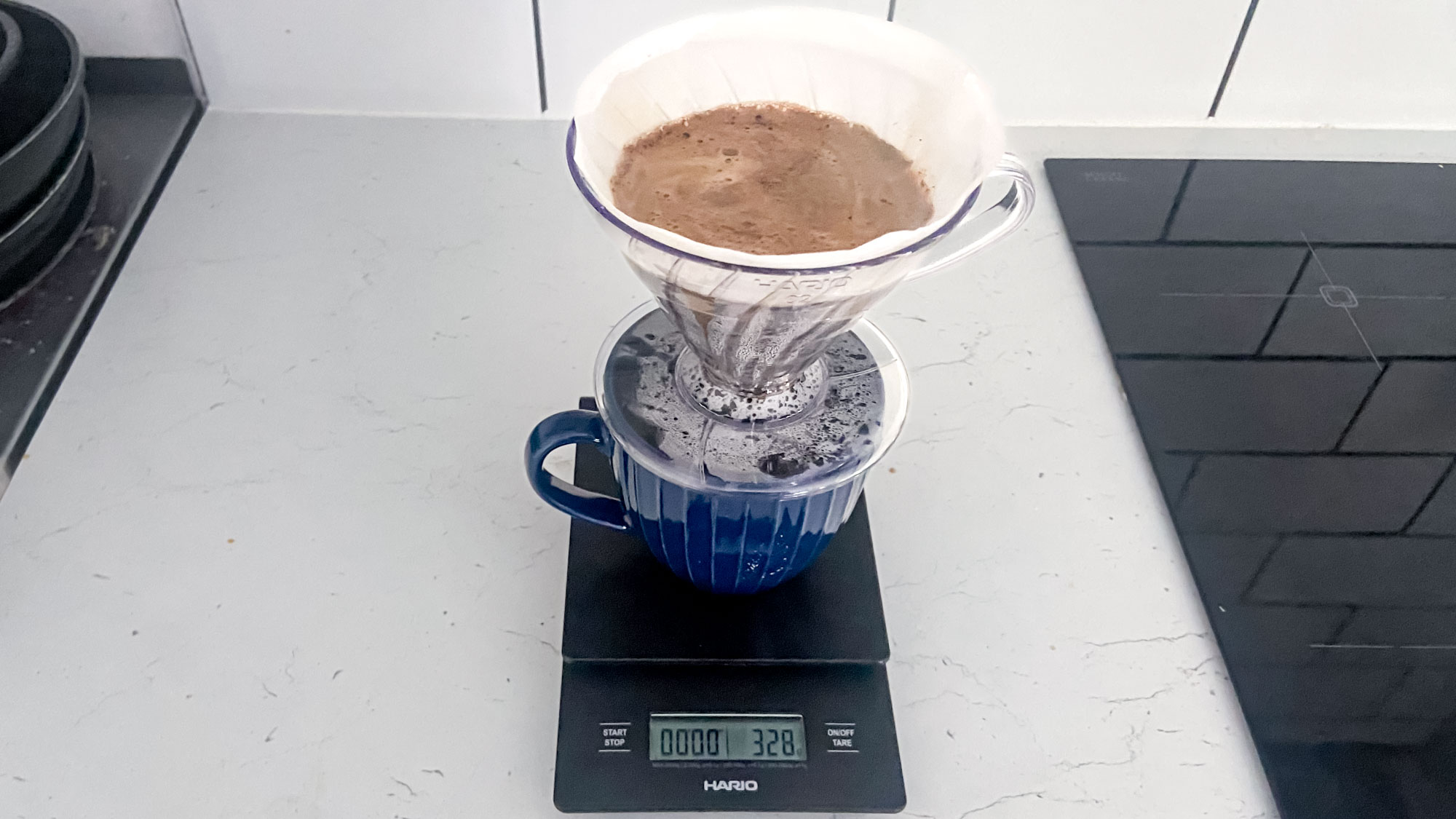
Before you choose your perfect coffee scale, you need to know exactly what you need. Let me walk you through a bit of the coffee jargon you might have glazed over.
Group handle
Group handle is the metal basket and handle that holds the portafilter, where you put the coffee.
Portafilter
Portafilter is the metal basket in the group handle where you put the coffee grounds.
Puck
Puck refers to the coffee grounds in the portafilter.
Flow-rate
Flow-rate is basically how fast the water comes out of the coffee. The ideal rate will be different depending on the type of coffee: a double shot of espresso should extract 36g in around 25 seconds, and pour-over around 1.3-1.6 g/s. So if espresso flows at 1.44 grams per second, it should take 25 seconds to extract 36g of coffee. There are lots of different opinions on the ‘best’ flow-rate, but at the end of the day, it all depends on your taste. A coffee scale can help you figure out what that taste is.
Pre-infusion time
Pre-infusion time means the time before water comes from the portafilter spout, when the espresso machine flows water through the puck at low pressure. Then, how long that water takes to travel through the puck into the spout. This will differ depending on the coffee grind, amount of coffee in the portafilter, and how hard you tamp. There is no right or wrong, it all depends on your taste.
Ratio
Ratio is how much water to coffee there is. Most people think the ideal ratio for pour-over is 1:16, so for every 10g of coffee grounds, you should get 160g of water out. Espresso is 1:2, so for 18g coffee, you should get 36g out. However, coffee is all about your taste, so you might not like these ratios. A coffee scale can help you figure out your ideal ratio.
IP rating
IP rating refers to the durability of a product; how much dust or water it can withstand. If a scale is rated IPX4 and above, it can withstand a little water splashing and cleaning.
FAQs
Are coffee scales worth it?
In my opinion, the answer is as simple as this: Yes. I started using a coffee scale, and my drinks started tasting amazing — which is why I’ve dedicated my time to testing as many scales as I can and writing this guide for you. In short, coffee scales help you work out ratio, consistency, and personal preference.
What does a coffee scale actually do?
As you might’ve guessed, a coffee scale simply weighs coffee. I know, simple, right? There’s so much more, though. Yes, you need specific weights to get the best flavor coffee, and different types of beans and grinds require different ratios of coffee to water. If you’re unsure, when you purchase your specialty beans online, most reputable websites will give you perfect measurements.
Do you need a coffee scale?
For the long and short of it, basically: a coffee scale ensures accuracy, which gives a better taste, and means you’ll be able to brew perfect drinks every time.
What kind of scale do you need for coffee?
Coffee scales and food scales are not the same thing. While digital food scales are designed to weigh heavier things like sugar, flour, and butter, coffee scales are far more precise and accurate.
Coffee scales also must have a weight display to 0.1g and a timer. Anything more than this is simply a flourish — however welcome those flourishes may be.
Sign up to get the BEST of Tom's Guide direct to your inbox.
Get instant access to breaking news, the hottest reviews, great deals and helpful tips.

Erin Bashford is a staff writer at Tom’s Guide, covering reviews. She has a Masters in Broadcast and Digital Journalism from the University of East Anglia and 7 years of experience writing music, events, and food reviews. Now she’s turned her attention to tech for Tom’s Guide, reviewing everything from earbuds to garlic crushers. In her spare time you can find her reading, practising yoga, writing, or stressing over today’s NYT Games.
